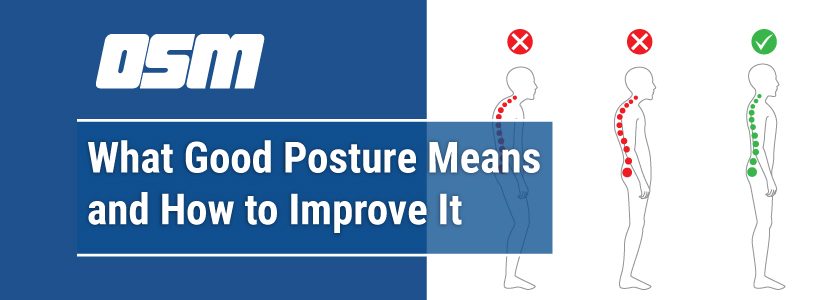What Good Posture Means and How to Improve It
Article featured on Harvard Health Publishing
“Stand up straight.” That’s timeless advice we’ve probably all heard at one time or another. It’s worth heeding. Good posture is important to balance: by standing up straight, you center your weight over your feet. This also helps you maintain correct form while exercising, which results in fewer injuries and greater gains. And working on balance can even strengthen your abilities in tennis, golf, running, dancing, skiing — and just about any other sport or activity.
Not an athlete? It still pays to have good balance. Just walking across the floor or down the block requires good balance. So do rising from a chair, going up and down stairs, toting packages, and even turning to look behind you.
Poor posture isn’t necessarily a bad habit, either. Physical reasons for poor posture include:
- Inflexible muscles that decrease range of motion (how far a joint can move in any direction). For example, overly tight, shortened hip muscles tug your upper body forward and disrupt your posture. Overly tight chest muscles can pull your shoulders forward.
- Muscle strength affects balance in a number of ways. The “core muscles” of the back, side, pelvis, and buttocks form a sturdy central link between your upper and lower body. Weak core muscles encourage slumping, which tips your body forward and thus off balance. Strong lower leg muscles also help keep you steady when standing.
The good news: You can improve your posture with a few simple exercises. Balance-specific workouts address posture and balance problems with exercises that build strength where it counts and stretches that loosen tight muscles. Quick posture checks in the mirror before and during balance exercises can also help you get the most from your regular workout. And increasing your core strength and flexibility can help you improve your posture noticeably in just a few weeks.
Good posture means:
- chin parallel to the floor
- shoulders even (roll your shoulders up, back, and down to help achieve this)
- neutral spine (no flexing or arching to overemphasize the curve in your lower back)
- arms at your sides with elbows straight and even
- abdominal muscles braced
- hips even
- knees even and pointing straight ahead
- body weight distributed evenly on both feet.
When sitting down, keep your chin parallel to the floor; your shoulders, hips, and knees at even heights; and your knees and feet pointing straight ahead.
The Orthopedic & Sports Medicine Center of Oregon is an award-winning, board-certified orthopedic group located in downtown Portland Oregon. We utilize both surgical and nonsurgical means to treat musculoskeletal trauma, spine diseases, sports injuries, degenerative diseases, infections, tumors and congenital disorders.
Our mission is to return our patients back to pain-free mobility and full strength as quickly and painlessly as possible using both surgical and non-surgical orthopedic procedures.
Our expert physicians provide leading-edge, comprehensive care in the diagnosis and treatment of orthopedic conditions, including total joint replacement and sports medicine. We apply the latest state-of-the-art techniques in order to return our patients to their active lifestyle.
If you’re looking for compassionate, expert orthopedic surgeons in Portland Oregon, contact OSM today.
Phone:
503-224-8399
Address
17355 Lower Boones Ferry Rd Suite 100A
Lake Oswego, OR 97035
Hours
Monday–Friday



